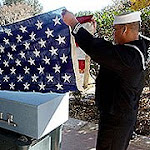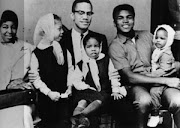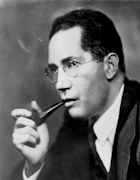 "Domestic violence causes far more pain than the visible marks or bruises and scars. It is devastating to be abused by someone that you love and think loves you in return. It is estimated approximately 3 million incidents of domestic violence are reported each year in the United States."
"Domestic violence causes far more pain than the visible marks or bruises and scars. It is devastating to be abused by someone that you love and think loves you in return. It is estimated approximately 3 million incidents of domestic violence are reported each year in the United States."
--Senator Diane Feinstein
Listen up. Yesterday, The Daddy posted a piece from the group HelpGuide.org. on abuse. It talked about what abuse is; and it made it clear that abuse of another person is about control:
"Domestic abuse, also known as spousal abuse, occurs when one person in an intimate relationship or marriage tries to dominate and control the other person. Domestic abuse that includes physical violence is called domestic violence. Domestic violence and abuse are used for one purpose and one purpose only: to gain and maintain total control over you."This piece gets more specific. It talks about the signs of abuse. Note that the piece emphasizes that physical violence is only one form of violence and talks about other types of violence. Check it out:Signs of an abusive relationship
There are many signs of an abusive relationship. The most telling sign is fear of your partner. If you feel like you have to walk on eggshells around your partner—constantly watching what you say and do in order to avoid a blow-up—chances are your relationship is unhealthy and abusive. Other signs that you may be in an abusive relationship include a partner who belittles you or tries to control you, and feelings of self-loathing, helplessness, and desperation.
To determine whether your relationship is abusive, answer the questions below. The more “yes” answers, the more likely it is that you’re in an abusive relationship.
| SIGNS THAT YOU’RE IN AN ABUSIVE RELATIONSHIP |
| Your Inner Thoughts and Feelings | Your Partner’s Belittling Behavior |
Do you: - feel afraid of your partner much of the time?
- avoid certain topics out of fear of angering your partner?
- feel that you can’t do anything right for your partner?
- believe that you deserve to be hurt or mistreated?
- wonder if you’re the one who is crazy?
- feel emotionally numb or helpless?
| Does your partner: - humiliate or yell at you?
- criticize you and put you down?
- treat you so badly that you’re embarrassed for your friends or family to see?
- ignore or put down your opinions or accomplishments?
- blame you for his own abusive behavior?
- see you as property or a sex object, rather than as a person?
|
| Your Partner’s Violent Behavior or Threats | Your Partner’s Controlling Behavior |
Does your partner: - have a bad and unpredictable temper?
- hurt you, or threaten to hurt or kill you?
- threaten to take your children away or harm them?
- threaten to commit suicide if you leave?
- force you to have sex?
- destroy your belongings?
| Does your partner: - act excessively jealous and possessive?
- control where you go or what you do?
- keep you from seeing your friends or family?
- limit your access to money, the phone, or the car?
- constantly check up on you?
|
Physical violence is just one form of domestic abuse
When people think of domestic abuse, they often picture battered women who have been physically assaulted. But not all domestic abuse involves violence. Just because you’re not battered and bruised doesn’t mean you’re not being abused.
Domestic abuse takes many forms, including psychological, emotional, and sexual abuse. These types of abuse are less obvious than physical abuse, but that doesn’t mean they’re not damaging. In fact, these types of domestic abuse can be even more harmful because they are so often overlooked—even by the person being abused.
Emotional or psychological abuse
The aim of emotional or psychological abuse is to chip away at your feelings of self-worth and independence. If you’re the victim of emotional abuse, you may feel that there is no way out of the relationship, or that without your abusive partner you have nothing.
Emotional abuse includes verbal abuse such as yelling, name-calling, blaming, and shaming. Isolation, intimidation, and controlling behavior also fall under emotional abuse. Additionally, abusers who use emotional or psychological abuse often throw in threats of physical violence.
You may think that physical abuse is far worse than emotional abuse, since physical violence can send you to the hospital and leave you with scars. But, the scars of emotional abuse are very real, and they run deep. In fact, emotional abuse can be just as damaging as physical abuse—sometimes even more so. Furthermore, emotional abuse usually worsens over time, often escalating to physical battery.
Sexual abuse
Sexual abuse is common in abusive relationships. According to the National Coalition Against Domestic Violence, between one-third and one-half of all battered women are raped by their partners at least once during their relationship. Any situation in which you are forced to participate in unwanted, unsafe, or degrading sexual activity is sexual abuse.
Forced sex, even by a spouse or intimate partner with whom you also have consensual sex, is an act of aggression and violence. Furthermore, women whose partners abuse them physically and sexually are at a higher risk of being seriously injured or killed.
Economic or financial abuse
Remember, an abuser’s goal is to control you, and he will frequently use money to do so. Economic or financial abuse includes:
- Rigidly controlling your finances.
- Withholding money or credit cards.
- Making you account for every penny you spend.
- Withholding basic necessities (food, clothes, medications, shelter).
- Restricting you to an allowance.
- Preventing you from working or choosing your own career.
- Sabotaging your job (making you miss work, calling constantly)
- Stealing from you or taking your money.
It Is Still Abuse If . . .
- The incidents of physical abuse seem minor when compared to those you have read about, seen on television or heard other women talk about. There isn’t a “better” or “worse” form of physical abuse; you can be severely injured as a result of being pushed, for example.
- The incidents of physical abuse have only occurred one or two times in the relationship. Studies indicate that if your spouse/partner has injured you once, it is likely he will continue to physically assault you.
- The physical assaults stopped when you became passive and gave up your right to express yourself as you desire, to move about freely and see others, and to make decisions. It is not a victory if you have to give up your rights as a person and a partner in exchange for not being assaulted!
- There has not been any physical violence. Many women are emotionally and verbally assaulted. This can be as equally frightening and is often more confusing to try to understand.
Source: Breaking the Silence: a Handbook for Victims of Violence in Nebraska (PDF)
 "I don't think he's ready for it on three days' rest," I think you're taking a chance on really pushing him."
"I don't think he's ready for it on three days' rest," I think you're taking a chance on really pushing him."





























































.gif)















































































